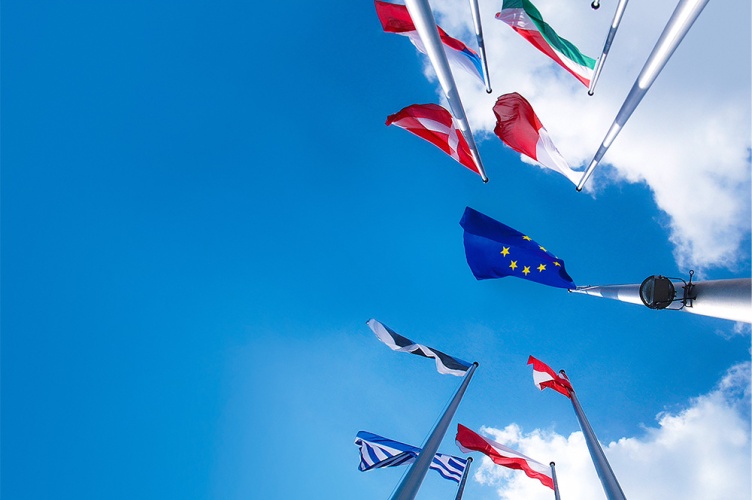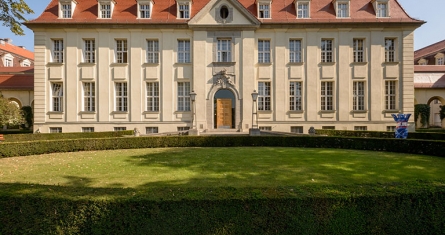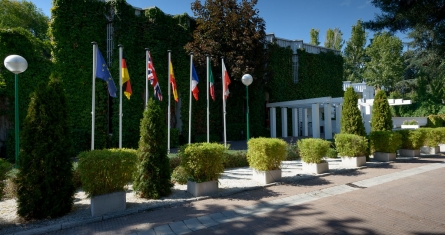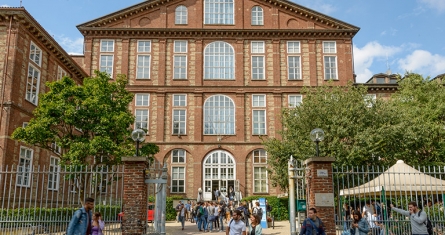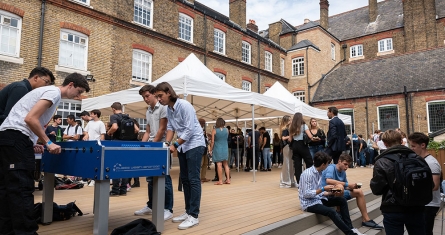1973: the creation of EAP
There is a paradox underlying the resounding success of EAP’s European model: it started out as a French project.
Origins and Unique European Model
To understand the origins of the creation of this unique school, we have to go back to 1972, when the French government decided to make engineering and business schools accessible to women. This decision made the existence of the HEC Jeunes Filles (“HEC for Young Women”) school obsolete.
The Paris Chamber of Commerce and Industry decided to create a new establishment, called the Ecole des Affaires Paris (“Paris Business School”), and entrusted a professor, Michel Furois, with the task of designing a brand new model, that would be resolutely European, and above all student-centred.
Admissions and Student Experience at EAP
The oral tests offered were quite different from those of other business schools and candidates were asked to do group work observed by psychologists in charge of analysing their behaviour. In addition to this test, there was the traditional "personality interview" where each eligible candidate faced a jury of five people, including two language teachers. The interview could switch from French to English or to German at any time.
The school favoured a primarily practical experience, as shown in its baseline "action, reflection"; a commitment that led the students to start with field experience and group projects, which constituted a radical change for them, as previously they only knew the very theoretical framework of their preparatory classes.
Renaming to EEA and Pedagogy
In 1980, the Ecole des Affaires Paris was renamed Ecole Européenne des Affaires (“European Business School”): a name more in line with its pedagogy that also allowed it to keep its acronym.
The student cohorts were quite small (about 50 students per year) and throughout the EAP curriculum, it was the whole class that travelled each year from campus to campus, which allowed for very strong ties between students.
Classes were taught in the local language of each campus, which helped to prepare students for a cross-cultural work environment. At EAP, there were no specialisations in consulting, finance, or marketing: it was the international experience that was the specialisation.
Merger of ESCP and EAP and Their Complementary Qualities
The Paris CCI took the initiative of the merger between ESCP and EAP that took place in 1999.
The two Parisian schools were complementary: academic excellence for the former, pedagogical innovation for the latter. However, they had in common what is now the school's DNA: a European and humanist commitment, and the singularity of having both been pioneers: the first business school in the world was now united with the first European school.
The merger gave a new impetus to ESCP, and added to EAP a name that often stands for academic excellence in the eyes of French students and recruiters alike.
International Expansion of ESCP and Multicultural Approach
ESCP is the first school with international campuses to train not local students, but students of all nationalities, who leave with diplomas accredited by all the countries in which the school is present. This integration of study tracks and local recognition makes it the most international and multicultural school today.
Students were able to discover the Madrid Campus in 1987 and the Turin Campus in 2004. In 2005, the UK Campus moved from Oxford to London, and in 2015, the school opened up to Eastern Europe with the creation of the Warsaw campus.
International Expansion of ESCP and Multicultural Approach
Although EAP is little known to current ESCP students, its legacy is still very visible today. The European campuses are the clearest evidence of this, and though the name of the school no longer includes the three letters of EAP, it has left its mark on the school as we know it today.
